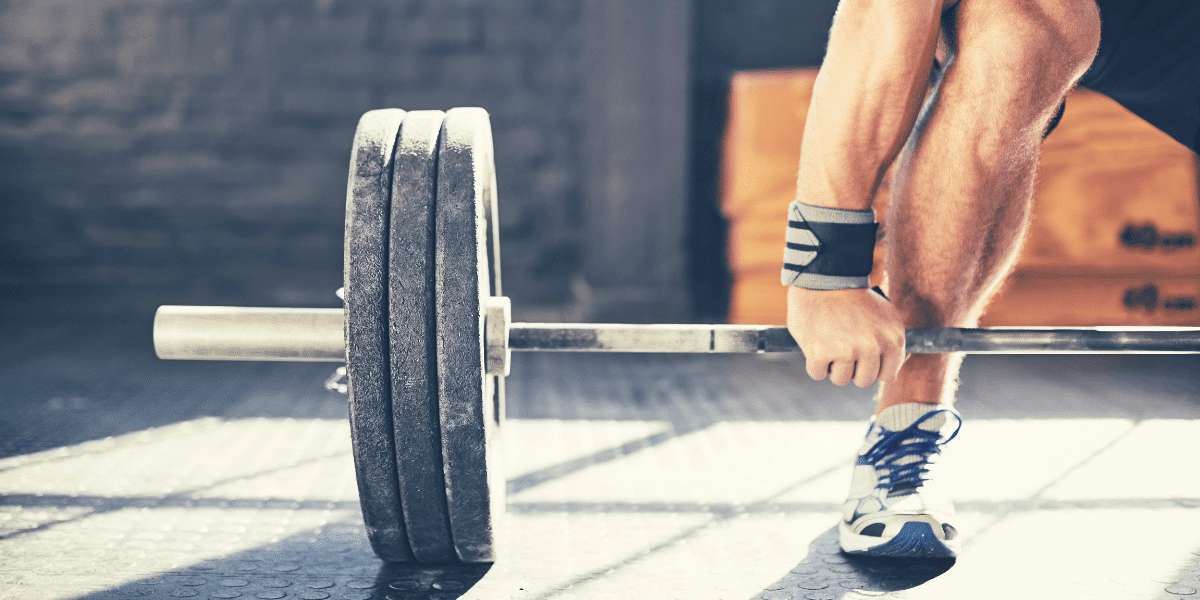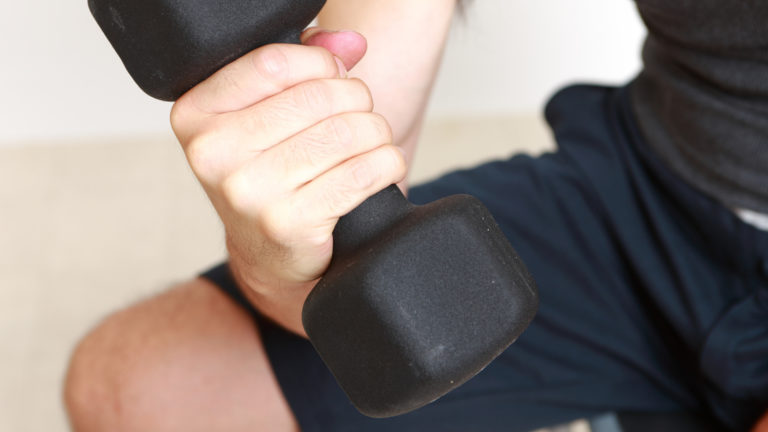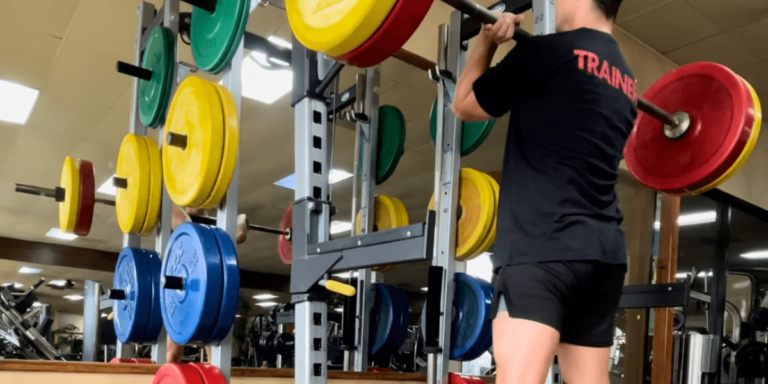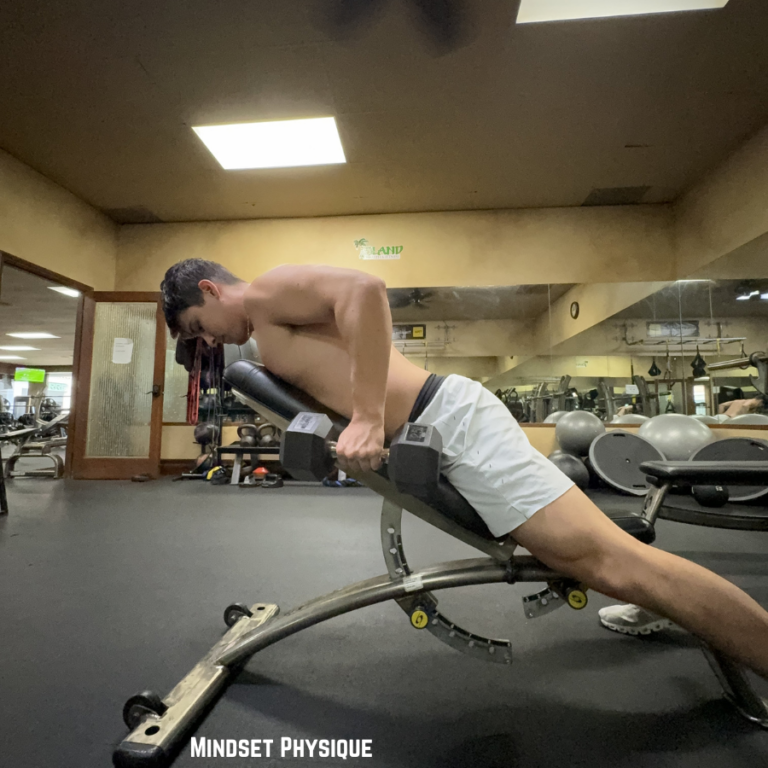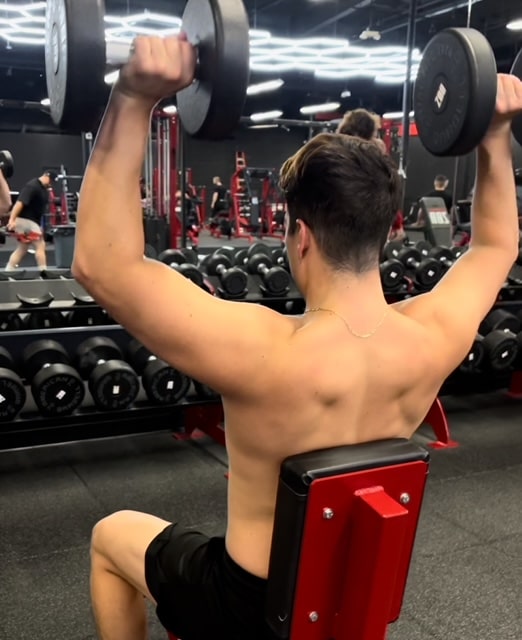How To Do The Barbell RDL Safely | Form Breakdown, Variations, & Benefits
Barbell Romanian Deadlift, or Barbell RDL for short, is a must-add exercise to your lower body workout routine. It focuses primarily on the glutes and hamstrings.
This hip-dominant exercise is often shunned due to concerns about lower back pain. However, when performed correctly, Barbell RDLs should not cause any discomfort. They can help strengthen your lower back muscles while targeting your posterior chain.
If you want to grow bigger and stronger glutes, sleep on the benefits of this exercise.
We will cover all things RDLs so you can perform this exercise like a pro and not neglect those booty gains.
What is The Barbell RDL? (Romanian Deadlifts)
Romanian Deadlifts work differently from Traditional Deadlifts, starting with the barbell at the waist and working your way down, rather than starting at the ground and working your way up.
Muscles Worked During The Barbell RDL
RDLs are part of the hip hinge movement pattern, which makes it a hip-dominant exercise.
Primary Muscles Glutes
Secondary Muscles: Hamstrings & Erector Spinae Muscles
Romanian Deadlifts will isolate the posterior chain more (Glutes, Hamstrings, Erector Spinae) vs. a traditional deadlift that will work some of the anterior chains of the body in addition to the posterior chain.
Reasons You Need To Know the Barbell RDL
The barbell RDL is an essential exercise in your training program to build strength and hypertrophy in the glutes and hamstrings.
With the proper form, this exercise also helps with overall posture, making it a valuable addition to any strength training workout routine.
One of the challenges of the barbell RDL is that it’s easy to have improper form, which increases the risk of injury. However, by focusing on proper form and practicing regularly, you can avoid injury while reaping the benefits of this exercise.
Step-by-Step Instructions to Perform The Barbell RDL Safely
Below is my step-by-step guide on how to perform the Barbell RDL safely and effectively.
You can also refer to my TikTok video that explains how to perform the barbell RDL in under 40 seconds.
But keep this post handy for your full, in-depth tutorial.
The Hip Hinge Mastery
Mastery of the hip hinge is crucial to any hinge movement, especially with Barbell RDLs. Remember, this is a hip-dominant exercise. All movement is done at the hip level.
To achieve a proper hip hinge, start with your hips forward and gradually push your hips back as if tapping a wall with your glutes.
It’s essential to work on increasing the range of motion while you continue to progress on this exercise. It might take some time, but take your time with this process.
Having the right pair of weight-lifting shorts can also help you work on your hip range of motion; although not a deal-breaker, it can still make a difference in your technique.
Focus on perfecting the form while increasing the range of motion when you hinge at the hips. Once you master the hip hinge, you’ll be on your way to increasing weight and hitting PRs!
Grasping the Perfect Hand Placement
Hand placement is one of the first essential aspects to consider when performing barbell RDLs.
Opting for a shoulder-width distance grip is the most common way.
As you progress and begin to lift heavier weights, it’s recommended to use wrist wraps for added support. Nonetheless, the exercise will still put your grip strength to the test.
Another helpful tip is using the barbell’s grid marks to guide hand placement. I like to keep my thumb a comfortable distance from the close end of the grip to ensure I remain in the optimal shoulder-width position.
Initiating the Descent – Keeping the Spine Neutral
On the eccentric portion of this exercise (coming down), it’s essential to maintain a slow and steady control.
As you send your hips backward, keep that barbell close to your shins as if they’re glued together. This helps to maintain proper form and prevent any unnecessary strain on your back. (rounding).
Next, keep your head aligned with your spine and avoid sticking it out.
For a visual perspective, check out the TikTok video above.
The Smooth Ascent [Full Range of Motion]
Keep the pacing normal on the concentric phase of the barbell RDL exercise (coming up).
Still, keep that bar close as you bring your hips forward and squeeze the glutes at the top, ensuring you’re getting the full range of motion when performing the exercise.
Core Stability
It’s important to keep your core engaged throughout the entire movement.
Keep your abs tight for the whole duration of the exercise.
On the decent (eccentric portion)
And on the ascend (concentric portion)
Core stability will help you maintain stability and good posture, ensuring your back remains flat and protected from injury.
Breathing Techniques for Optimal Performance
When it comes to any exercise, breath control can make all the difference.
Whether lifting weights, doing yoga, or running on the treadmill, proper breathing can help boost your overall performance.
This is especially true when hitting those last few reps, where an extra breath of air could differentiate between success and failure.
On the eccentric: Inhale as you move downward or lower your body
On the concentric: Exhale as you go upward or lift yourself.
Focusing on breath control can make the exercise more effective and help you push past your limits and achieve new feats of strength.
But If you hold it in, you’ll tap out earlier than you could’ve.
Common Mistakes to Avoid
Now, down to the actual form tips and what to watch out for. Some common mistakes are:
1.) Arching-Rounding Your Back
Arching your back puts pressure on the lower back, and many people start complaining about their lower back hurting.
Though you will sometimes feel it in your lower back because your erector spinae muscles are working here, we don’t want to apply a lot of pressure. Keep your chest UP!
2.) Squatting
Remember, this is a hip-dominant exercise. Besides keeping that soft bend in the knees, all movement is done by hinging at the hips.
3.) Not Tucking Your Chin
Keep your head and spin neutral (align with each other).
Fine-Tuning Your Technique
So, what are the form tips for doing the barbell RDL?
1.) Shoulders Back [Retraction of Scapula]
Roll your shoulders back. This helps keep your back from rounding.
2.) Shoulders Down [Depression of Scapula]
In addition to rolling those shoulders back, immediately bring them down.
3.) Chest Up [Proud Chest]
This also helps you tremendously from rounding the back. Keep the chest up and proud!
4.) Soft Knee Bend
We don’t want to lock out those knees for this particular exercise, so keep a slight bend and let your hips do the rest of the work again –
Hinging at the hips.
5.) Head and Spin Stay Neutral [In Line With Each Other]
Don’t let your chin/head stick out; keep them in line with your spine!
If you need help on this portion of the movement, have someone line a light pole up against your head and back, and keep them in line with that pole throughout the entire movement of the exercise. That helps keep everything in check.
6.) Barbell Stays Glued To Your Shins
It’s super important because this is where I see many people need to work on form.
If that barbell is a mile away from your shins, that back will be rounding, and the lower back will be aching!
Keep the barbell very close to your shins. Keep the barbell glued to your shins.
Key Considerations For Successfully Performing the Barbell RDL
Once you get the proper form down, you want to focus on progressing this exercise over time. Adding more weight or increasing time under tension are just a few examples.
Sprinkling in a few RDL variations over time will also help your training regimen.
Let’s cover a few progressions, regressions, and overall alternatives below for the barbell RDL.
Don’t worry; they still target the same muscle groups!
Taking it to the Next Level: Progressions for the Barbell RDL’s
Single Leg RDL
Single Leg Romanian Deadlift is a great way to focus on one leg at a time, leading to more leg balance and stability.
The form is relatively the same as a regular barbell RDL, but it’s done with just one leg.
Start light and practice with body weight first to get used to the movement.
Deficit RDL
Also known as ‘Elevated Surface RDLs, this is a great way to work on an extra range of motion and overload the hamstrings more by adding that deficit.
You can elevate your feet on an Olympic plate or a small block to help you get that extra deep stretch on this progression.
Regressions for the Barbell RDL’s
Dumbbell RDL’s
Dumbbell RDLs would be the most beginner-friendly way to get comfortable with the exercise. As mentioned above, you are still working the same muscle groups, and your form will benefit from this exercise by starting with a lighter weight.
Remember, the average Olympic barbell weighs 45lbs, so that + some weight on each side may be too heavy if you’re starting with this exercise and need a lighter weight.
Barbell Romanian Deadlift Alternatives
Any hip hinge movement pattern will be a great alternative to the barbell Romanian deadlift. All these exercises should be included in your program at one point or another throughout your training regimen.
Exercises such as Barbell Hip Thrusts and Cable Pull-throughs are great alternatives to the barbell RDL. These exercises target the same muscle groups and help you build strength and stability in your posterior chain.
Don’t be afraid to mix things up and try different variations of the barbell RDL.
Check out the full list below:
- Conventional Deadlift
- Sumo Deadlift
- Single Leg Romanian Deadlift
- Kickstand Romanian Deadlift
- Stiff Leg Deadlift
- Good mornings
- Barbell Hip Thrusts
- Kettlebell Swings
- Cable Pullthroughs
- Landmine RDL’s
- Dumbbell RDL’s
The key is to keep challenging yourself and incorporating different variations to prevent plateauing and continually improving your strength and stability.
Form is always the most important factor, so make sure you have the proper technique down before increasing weight or trying more advanced variations.
Wrapping Up and My Experience With Barbell RDL’s
As a personal trainer and online fitness coach, one of the most rewarding parts of the job (one out of many) is getting clients to hinge correctly.
I have also seen RDLs’ impact on building strength and improving athletic performance. I have also incorporated these exercises into my training routine and have seen great results across overall strength and glute gains!
Are you worried about performing barbell RDLs? What other misinformation has stopped you from doing this exercise?
